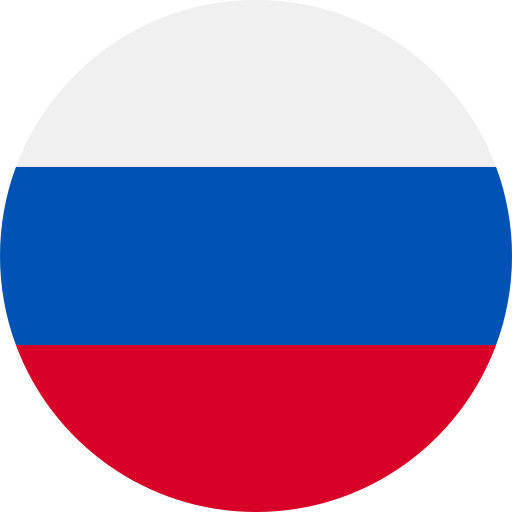Key Takeaways
- Significant Energy Exporter: Russia is a leading global supplier of energy resources, accounting for approximately 10% of crude oil and 15% of natural gas exports, making it essential to many countries’ economies.
- Agricultural Dominance: As one of the largest wheat exporters, Russia contributes around 20% of global wheat exports, impacting food security for nations reliant on these imports.
- Geopolitical Influence: Trade relationships are heavily influenced by sanctions and geopolitical factors, necessitating businesses to adapt their strategies based on Russia’s evolving role in international trade dynamics.
- Market Impact: Fluctuations in Russian production levels can significantly affect global commodity prices, particularly for energy and agricultural products, highlighting the interconnectedness of global markets.
- Emerging Trade Partnerships: Collaboration within BRICS and enhanced integration in the Eurasian Economic Union (EAEU) present opportunities for Russia to expand its influence and diversify trade relationships beyond traditional Western markets.
- Future Growth Potential: Opportunities exist in energy transition, agricultural innovation, technology sector expansion, infrastructure development, and sustainable practices that could enhance Russia’s position in international trade moving forward.
Ever wondered how Russia impacts international trade? As one of the world’s largest economies, its role is crucial and often overlooked. From energy exports to agricultural products, Russia’s influence stretches far beyond its borders.
Understanding Russia’s position in global markets can help you navigate the complexities of international trade. With shifting alliances and economic sanctions shaping the landscape, it’s vital to grasp how these factors affect your business strategies. Dive into this article to uncover insights on Russia’s trade dynamics and what they mean for you in today’s interconnected world.
Overview Of Russian’s Role In International Trade
Russia plays a pivotal role in international trade, significantly influencing global markets through its diverse exports. As one of the world’s leading economies, it ranks among the top exporters of energy resources, particularly oil and natural gas. In 2022, Russia accounted for approximately 10% of the world’s crude oil supply and about 15% of natural gas exports. These figures illustrate how critical Russian energy is to various countries’ economies.
Agricultural products also contribute substantially to Russia’s trade portfolio. The nation stands as one of the largest wheat exporters globally, providing around 20% of total wheat exports in recent years. This agricultural dominance impacts food security for many nations reliant on imported grains.
Trade relationships are influenced by geopolitical factors and economic sanctions that can alter market dynamics. Countries often reassess their trading strategies based on Russia’s evolving role and partnerships within organizations like BRICS or the Eurasian Economic Union (EAEU). Understanding these shifting alliances helps businesses navigate potential risks and opportunities in their international dealings.
Recognizing Russia’s multifaceted contributions—ranging from energy supplies to agricultural exports—offers valuable insights into its significant presence in global trade networks.
Key Exports And Imports
Russia plays a vital role in international trade, particularly through its diverse exports and imports. This section highlights the key goods that shape Russia’s trading landscape.
Major Export Goods
Russia’s export portfolio is dominated by energy resources. Crude oil ranks among the top exports, with the country supplying around 10% of the world’s total. Natural gas follows closely behind, accounting for about 15% of global exports. These energy resources are critical for many nations’ economies, providing them with necessary fuel and heating sources.
In addition to energy, Russia excels in agricultural products. Wheat stands out as a major export; Russia supplies roughly 20% of all wheat exported worldwide. This significant contribution influences food security for countries reliant on imported grains.
Other notable exports include metals like aluminum and nickel, which play essential roles in various industries globally. Additionally, chemical products also contribute to Russia’s export revenue, showcasing its industrial capabilities.
Importing Needs
While Russia is a leading exporter, it also has specific importing needs that facilitate its economy. Machinery and equipment represent a substantial portion of imports, as these goods support domestic industries and technological advancements.
Consumer goods are another important category for Russian imports. Electronics and automobiles cater to the growing demand from consumers who seek modern conveniences and technologies not always produced domestically.
Pharmaceuticals also play a crucial role in meeting healthcare demands within Russia. The importation of medical supplies ensures access to necessary treatments for the population.
Understanding both sides of this trade equation reveals how interconnected global markets truly are—each nation relies on others to fulfill unique demands while contributing to shared economic growth.
Impact On Global Markets
Russia’s role in international trade significantly influences global markets, particularly through its vast energy resources and agricultural exports. Understanding this impact is crucial for grasping the interconnectedness of today’s economies.
Influence On Commodity Prices
Russia plays a vital role in shaping commodity prices worldwide. As one of the largest suppliers of crude oil and natural gas, fluctuations in Russian production or export levels can lead to immediate changes in energy prices. For instance, geopolitical tensions or sanctions often result in price spikes due to fears of supply disruptions. In 2022, Russia contributed about 10% of global crude oil production and around 15% of natural gas exports, making it a key player that countries can’t overlook.
Additionally, Russia’s dominance as a wheat exporter also affects food prices globally. With approximately 20% share in total wheat exports, any changes in Russian harvests due to climate conditions or trade policies can influence food security for many nations reliant on these imports.
Trade Relations With Key Countries
Trade relations with key countries further amplify Russia’s impact on global markets. Major importers like China and the European Union rely heavily on Russian energy supplies for their industrial sectors and heating needs. These relationships create interdependencies that shape economic strategies on both sides.
Moreover, partnerships within organizations like BRICS enhance Russia’s influence over emerging markets. By collaborating with Brazil, India, China, and South Africa, Russia expands its reach into diverse regions while fostering alternative trading systems less dependent on Western nations.
In contrast to traditional alliances affected by sanctions or political shifts, these new partnerships enable Russia to maintain its presence in global trade networks actively. Understanding these dynamics offers valuable insights into how market trends develop and change based on Russia’s evolving role within international commerce.
Challenges Faced By Russia
Russia encounters several challenges in international trade that impact its global standing and economic performance. Understanding these hurdles is crucial for evaluating Russia’s role within the world market.
Sanctions And Trade Barriers
Sanctions imposed by Western nations significantly affect Russia’s trade capabilities. Following geopolitical events, numerous countries have restricted trade with Russia, limiting access to vital markets. These sanctions target various sectors, including finance, energy, and technology. For instance, restrictions on banking transactions hinder Russian businesses from securing foreign investments. Additionally, import bans on specific goods create further complications for trade relationships. As a result, Russian exporters face difficulties finding alternative markets to replace lost opportunities.
Economic Constraints
Economic constraints also play a pivotal role in shaping Russia’s trading landscape. Fluctuating oil prices directly impact government revenue and influence economic stability. When oil prices drop, budget deficits arise, leading to reduced public spending and investment in infrastructure essential for trade growth. Furthermore, reliance on energy exports makes the economy vulnerable to market volatility. Inflation rates can escalate quickly due to external pressures or domestic policy issues, affecting purchasing power and demand for imports as well.
Navigating these challenges requires strategic adaptation from both the government and businesses involved in international commerce.
Future Prospects
Russia’s role in international trade is poised for significant developments, shaped by evolving geopolitical dynamics and economic strategies. Understanding these prospects offers valuable insights into the future of global markets.
Potential Growth Areas
Russia possesses several potential growth areas that can enhance its position in international trade.
- Energy Transition: As the world shifts towards renewable energy, Russia’s vast resources in natural gas may serve as a transitional fuel for many countries aiming to reduce carbon emissions.
- Agriculture Innovation: Investing in agricultural technology could boost productivity and allow Russia to maintain its status as a leading wheat exporter while exploring new markets for other crops.
- Technology Sector Expansion: Fostering advancements in information technology and digital services can diversify exports beyond traditional sectors, tapping into growing global demand for tech solutions.
- Infrastructure Development: Upgrading transport infrastructure facilitates smoother logistics and enhances connectivity with trading partners, potentially increasing export efficiency.
- Sustainable Practices: Embracing sustainability can open doors to markets prioritizing environmentally friendly products, aligning with global trends toward responsible consumption.
Emerging Trade Partnerships
Emerging trade partnerships present opportunities for Russia to strengthen its influence on the global stage.
- BRICS Collaboration: Expanding cooperation within BRICS allows access to emerging economies seeking alternative suppliers outside established Western markets.
- EAEU Integration: Enhanced integration within the Eurasian Economic Union (EAEU) promotes regional trade relations, fostering economic resilience against external pressures.
- Asian Market Engagement: Strengthening ties with Asian nations like China and India creates new avenues for exports while diversifying dependencies away from traditional European buyers.
- Investment Opportunities: Attracting foreign investment through favorable regulations encourages technology transfer and boosts domestic industries essential for competitive growth.
- Bilateral Agreements: Negotiating bilateral trade agreements helps streamline tariffs and fosters mutual benefits that can drive economic prosperity across borders.
By focusing on these growth areas and partnerships, Russia can adapt to changing market demands while maintaining its critical role in international commerce amidst shifting geopolitical landscapes.
Conclusion
Russia’s influence on international trade is profound and multifaceted. Its energy resources and agricultural exports shape global markets and impact food security for many nations. As you consider the shifting dynamics of trade relationships, it’s crucial to recognize how sanctions and economic constraints affect Russia’s position.
Emerging partnerships through organizations like BRICS offer new avenues for growth despite challenges. By adapting to market demands and focusing on innovation, Russia can maintain its significance in the global economy. Understanding these complexities will empower you to navigate international commerce more effectively as the landscape continues to evolve.
Frequently Asked Questions
What is Russia’s role in international trade?
Russia plays a crucial role in international trade as one of the world’s largest economies. It significantly influences global markets, particularly through its energy and agricultural exports, including crude oil, natural gas, and wheat.
How much of the world’s energy does Russia supply?
In 2022, Russia accounted for about 10% of the world’s crude oil supply and around 15% of natural gas exports. This highlights the importance of Russian energy resources to various countries’ economies.
What are Russia’s major exports?
Russia’s major exports include energy resources like crude oil and natural gas, metals such as aluminum and nickel, and chemical products. These commodities play a significant role in shaping global market dynamics.
What does Russia import?
Russia primarily imports machinery and equipment to support domestic industries. Additionally, it relies on consumer goods such as electronics and automobiles to meet population demands, along with pharmaceuticals for healthcare needs.
How do sanctions affect Russia’s trade capabilities?
Sanctions imposed by Western nations limit Russia’s access to vital markets and complicate trade relationships. These restrictions can hinder economic performance and impact overall global standing in international trade.
What future prospects exist for Russia’s role in trade?
Future prospects for Russia include growth areas like energy transition, agricultural innovation, technology sector expansion, infrastructure development, and sustainable practices. Collaborating with BRICS nations presents opportunities to strengthen its global influence amidst changing market demands.







